Hoka One One Challenger ATR 6 Gore-Tex
Test Locations: Gunnison — Crested Butte, Colorado
Test Duration (so far): 55 miles
Stated Stack Height: 32 mm (heel) / 27 mm (forefoot)
Stated Heel-to-Toe Drop: 5 mm
Stated Features:
- Water-resistant mesh upper offers wearability in a variety of seasons
- Includes textured TPU toe reinforcements for added durability
- Internal heel counter provides support on all terrains
Early stage Meta-Rocker offers a smooth ride - Lightweight and oversized EVA midsole provides signature HOKA cushioning
- CMEVA foam midsole provides stable footing and absorbs impact points
- 4mm lugs provide all-terrain traction
- Pod-like outsole design provides stability on uneven terrain
Reviewer: 6’2″, 160 lbs / 188 cm, 70 kg
Size Tested: US Men’s 10
Stated Weight per Shoe (US Men’s Size 9): 309 g / 10.9 oz
Blister’s Measured Weight (US Men’s 10):
- Shoes + Laces: 310 g (left) & 301 g (right)
- Insoles: 14 g (left) & 13 g (right)
- Total: 324 g (left) & 314 g (right)
MSRP: $140
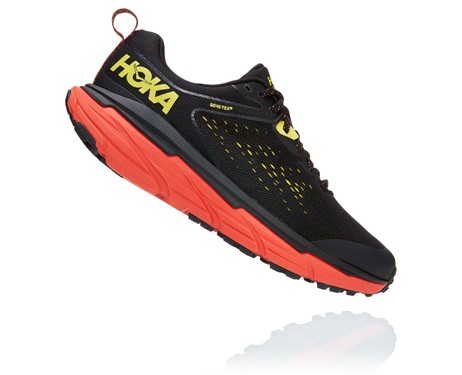
Intro
Well, it’s spring in the Colorado Rockies, which means snow is melting, the weather is all over the place, and mud season is here. In terms of running, this means that conditions are variable. On a 4-mile run from my door, I can encounter hard-packed snow, dry dirt, mud, slush, and even a little post-holing. Trying to find a running shoe that excels in all of those conditions while still being comfortable on your feet is, by nature, an exercise in compromise. However, the Hoka One One Challenger ATR 6 Gore-Tex has come pretty close to checking all of the boxes during my time in it so far.
Fit
The only way to really know how any running shoe will fit your foot is to go into a store and try it on for yourself. That being said, I’ll provide a general description of how the Challenger ATR 6 GTX fits my fairly average-width, average-volume feet.
I got the Challenger ATR 6 Gore-Tex in a size 10 and it fits true to size when compared to other shoes I’ve run in. As a reference, I wear a size 10 in Altra and an 11 in La Sportiva running shoes.

The Challenger ATR 6 GTX’s toe box is on the narrower side. Personally, the fit around the forefoot was tighter than I prefer, and my toes even felt cramped at times. Compared to the La Sportiva Jackal GTX, the Hoka Challenger ATR 6 Gore-Tex has a much narrower toe box. As someone who traditionally steers toward shoes with a wider toe box (e.g. the Altra Superior), I was not a huge fan of this aspect of the fit — but that’s definitely just my personal preference. Still, if you usually prefer a wider toe box, the Challenger ATR 6 Gore-Tex might feel a little constricting.
The rest of my foot feels evenly snug inside the upper, which, aside from the narrower toe box, is something that I generally like in a running shoe. The fit from the midfoot back to and including the heel is similar to the feel of the Altra Superior. There isn’t any extra room for my heel to wiggle around or slide up and down as I run. The upper also hugs my midfoot nicely, complimenting the nice arch support that the midsole provides.
Weight
With a stated weight of 10.9 oz / 309 grams for a US men’s 9, the Hoka One One Challenger ATR 6 Gore-Tex falls somewhere around middle of the pack when compared to other similar shoes with waterproof / breathable uppers. As a reference, here’s how the Challenger ATR 6 GTX compares to some other similar waterproof running shoes from different brands (all stated weights are based on a US Men’s Size 9):
280 g / 10 oz — Merrell Nova 2 Gore-Tex
290 g / 10.23 oz — Salomon Wildcross GTX
309 g / 10.9 oz — Hoka One One Challenger ATR 6 Gore-Tex
309 g / 10.9 oz — Nike Pegasus Trail 2 GTX
315 g / 11.1 oz — La Sportiva Jackal GTX
320 g / 11.3 oz — Brooks Cascadia 15 GTX
337 g / 11.9 oz — Salomon Speedcross 5 GTX
346 g / 12.2 oz — New Balance Fresh Foam Hierro v5 GTX
346 g / 12.2 oz — Hoka One One Speedgoat 4 GTX
374 g / 13.2 oz — Altra Lone Peak ALL-WTHR Low
All of the shoes on this list are fairly comparable to the Challenger ATR 6 Gore-Tex in terms of stated stack heights and heel-to-toe drops — with the exception of the Altra Lone Peak ALL-WTHR Low (zero-drop) and perhaps the Nike Pegasus Trail 2 GTX, which has a stated heel-to-toe drop of 10 mm.
I feel like running shoes in general have gotten so light in recent years that, unless you are racing or running very long distances (ultra-marathon distances), the differences you see in the numbers are a lot harder to feel in the real world. That being said, the Challenger ATR 6 Gore-Tex feels pretty light out on the trail, at least to me, and especially for how much cushion it offers. It’s by no means a minimalist shoe, but even toward the end of a two+ hour run, I don’t notice any excessive weight on my feet — which I think is pretty impressive for a waterproof / breathable shoe that provides as much cushioning as the Challenger ATR 6 GTX.
Upper
The Challenger ATR 6 GTX’s waterproof / breathable Gore-Tex upper is what drew me to the shoe in the first place. I wanted something that felt like a normal running shoe, yet still protected my feet from the elements during the winter and wet spring. In my opinion, the Challenger ATR 6 Gore-Tex comes pretty close to accomplishing that. Generally speaking, I don’t typically develop hot spots or blisters while running, except perhaps on very long runs of the all-day-adventure variety. I’m happy to report that the same held true for the Challenger ATR GTX — my feet feel very comfortable in the shoe, and I haven’t had any issues with blisters or hot spots. The waterproof upper isn’t too stiff or thick, and the tongue provides ample padding. In fact, the Challenger ATR 6 GTX feels pretty much the same as a normal, non-GTX shoe to me.

The beauty of Gore-Tex is you get the waterproofing (or at least water resistance) while still maintaining at least some level of breathability. That being said, the Challenger ATR 6 Gore-Tex will definitely not be as breathable as a shoe without a waterproof lining. In colder temperatures, I consider this a benefit, as it keeps my feet warmer. The Challenger ATR 6 GTX’s upper also feels lighter, more flexible, and more breathable to me than La Sportiva’s Jackal GTX. On the flip side, there is perhaps a little less protection from the elements compared to the Jackal GTX. I have sloshed through mud and snow on runs up to about two hours in the Hoka Challenger ATR 6 Gore-Tex, and the upper has kept my feet completely dry. However, I imagine if you were to take it out on a rainy day or very wet conditions for an extended period of time (all day), you would eventually get a little moisture seeping through, whether through the upper itself, or just from water inevitably getting over the low-cut ankle opening of the shoe.
Midsole
Like many Hoka shoes, the Challenger ATR 6 Gore-Tex features a very thick midsole. As evidenced by the shoe’s stated stack height of 32 mm in the heel and 27 mm in the toe, the Challenger ATR 6 GTX has no shortage of cushioning. In my opinion, the Challenger ATR 6 GTX’s cushioning doesn’t feel overly soft or overly stiff. My first impression was that the fairly flat footbed would leave me wanting in terms of arch support. But once I actually started running in the Challenger ATR 6 GTX, the shoe felt like it did a good job of fully supporting my feet all around. The thick midsole foam absorbs the points of my heel and the ball of my foot nicely. It also absorbs any protrusions from the ground, protecting my feet even without a rock plate.
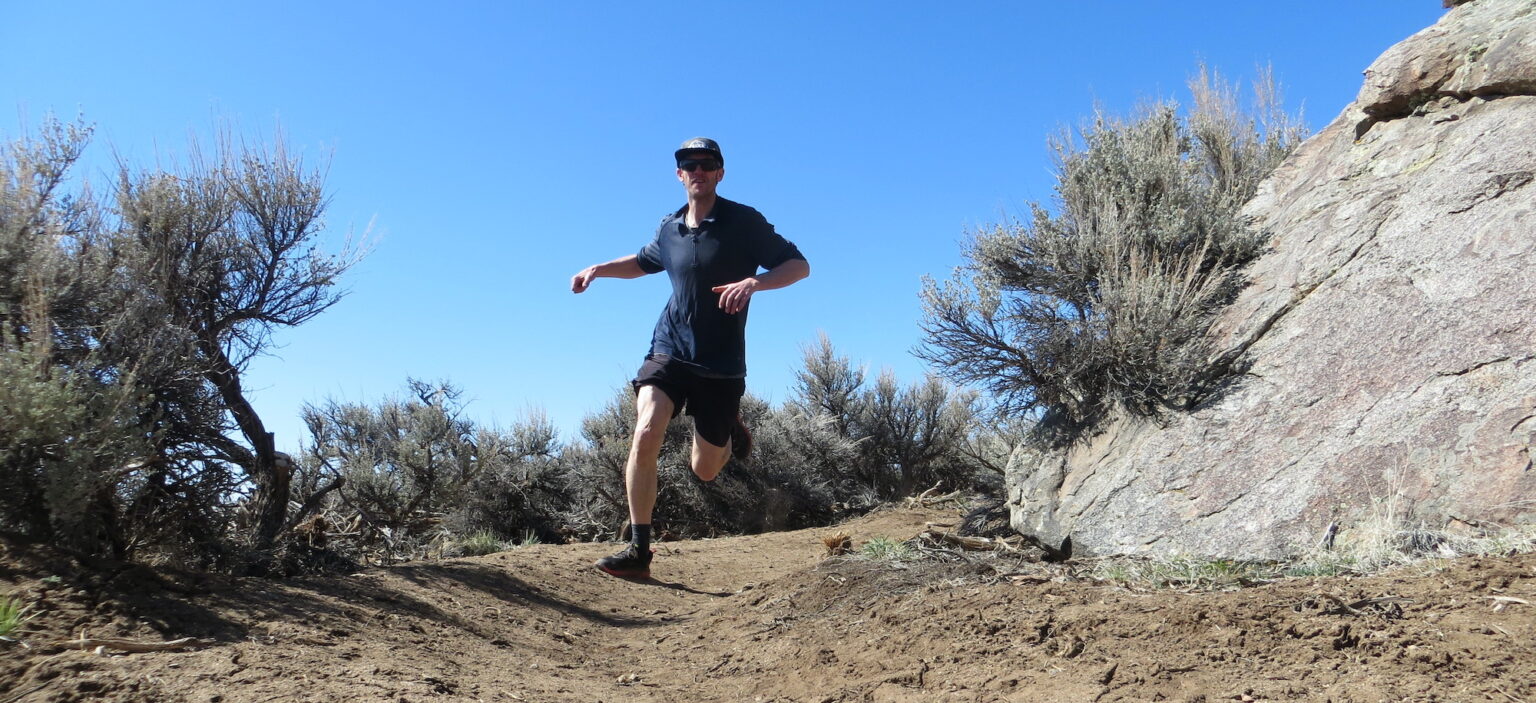
The Challenger ATR 6 GTX’s midsole also has a pretty rockered shape — especially in the forefoot. If you set the Challenger ATR 6 Gore Tex on the ground, neither the toe nor the heel fully touches the ground. The thickness of the midsole drops off noticeably from the midfoot to the toe. While running, this gives me the feeling of naturally wanting to be up on my toes. So, if you are a toe striker, I think this shoe will jive with your style. If not, I think you might still enjoy the Challenger ATR 6 GTX’s ride. I’ve played around with different foot-strikes a bit and the extra cushion throughout the midsole makes the Challenger ATR 6 Gore-Tex amenable to just about any running style, in my opinion. Overall, this is a very well-cushioned shoe; it’s not great if you prefer something minimal and with lots of ground feel, but it does offer the smooth ride you’d expect of a shoe with this thick of a midsole.
Outsole
The Challenger ATR 6 GTX’s outsole is a mix of a harder black rubber and fairly firm, exposed midsole foam. The rubber is there where it counts for traction / durability, namely under the toe and ball of the foot and on the end of the heel. So whether you’re heel or forefoot-striking in your running gait, you’ll have that good rubber hitting the ground first. From just in front of the point of the heel up to around the middle or front of the arch is just exposed foam midsole.
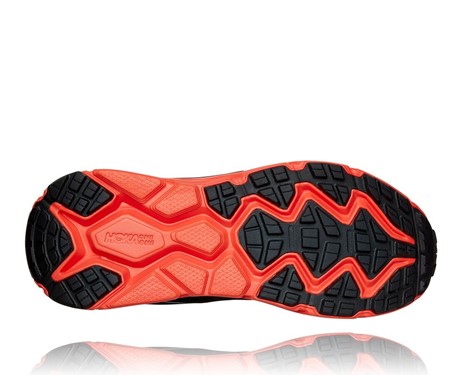
The lugs on the rubber are large enough to dig into softer ground, and the rubber itself is tacky to the touch and provides good traction over harder surfaces, such as rock or hard-packed dirt. The Challenger ATR 6 GTX does feel a bit slick when things get wet, but then again, so does everything (at least that I’ve run in so far). And this shoe is part of Hoka’s “All Terrain” series, which consists of shoes designed for a mix of trails and pavement, rather than being a pure off-road shoe. And still, that black rubber is grippy enough that it provides at least some amount of traction on wet rock. I like the rubber compound that Hoka’s using on the Challenger ATR 6 GTX — I wouldn’t hesitate to call it confidence-inspiring on rocky, technical terrain. I’ll go into more detail on durability below, but I’ll be curious to see how that exposed foam holds up over the long haul.
On Trail
The Hoka One One Challenger ATR 6 Gore-Tex felt pretty good on my feet almost straight out of the box. There was a little breaking in that took place on the first few runs, but I settled into the shoe much quicker than I did in the La Sportiva Jackal GTX.
The rubber compound on the outsole is great for technical terrain, especially given how “normal” / efficient it feels on smoother ground and pavement. The Gore-Tex upper has kept my feet dry on these muddy spring days. It also adds a little bit of warmth on cold mornings — that’s the nature of Gore-Tex / waterproofing: your feet will be warmer and the shoe will breath less. The latter hasn’t been an issue for me so far, though the Challenger ATR 6 GTX definitely won’t be my go-to summer running shoe. In the right circumstances, however, it will have its place in my lineup. I look forward to taking it into the high country this summer; I think the snugger fit, pretty grippy outsole, and ample cushioning could make for a comfortable, stable shoe for high-alpine ridge scrambles. While I prefer a wider toe box for general running, I usually prefer tighter-fitting shoes like the Challenger ATR 6 Gore-Tex when I get into 4th and 5th class scrambling. I doubt it’ll be the best option, just due to its big stack height and mostly foam outsole, but so far it seems promising on techy terrain.
One thing I have noticed on runs longer than about 5 miles in the Challenger ATR 6 GTX is that I start to lose feeling in my pinky toes. It’s worth noting here that I have issues with my toes in general, which could be a contributing factor. Another thing to consider here is that I much prefer a wider toe box for running shoes, such as you would find on an Altra. While I like the overall snug fit of the Challenger ATR 6 Gore-Tex, it might not be my first choice for runs longer than a couple of hours.
I also think that the Challenger ATR 6 GTX’s soft, thick midsole will make it a pretty comfortable hiking shoe — and the waterproof lining should make it a great shoe for backpacking in the high country. It’s always nice to not have to worry about mud and shallow stream crossings — no one likes to run or hike with wet feet (or at least I sure don’t). Then again, if you are prone to sweaty feet, the decreased breathability of the Gore-Tex material is worth taking into consideration. Still, with the generally mild temperatures that we have in the Colorado Rockies, this has never been an issue for me personally. I would imagine that the Challenger ATR 6 Gore-Tex would not be my first choice for running in the hot sage hills around Gunnison, CO in July. However, venturing into the high country or out on a rainy day? Absolutely.
Durability
After a little more than 50 miles, the Hoka One One Challenger ATR 6 Gore-Tex shows no wear whatsoever in the upper. The same can be said about the rubber lugs on the outsole. As mentioned above, I am a little leery about the durability of the exposed midsole foam under the arch of the foot. That red foam does show some signs of wear on the surface, though it’s only superficial and far less than I would have expected. It is also worth noting that the thick cushion of the midsole shows no signs of compression or loss of volume. So, my initial fears of this foam wearing out quickly are perhaps overstated. Time will tell, and I’ll update this review if / when I have anything new to add on the durability front after spending more time in this shoe.

Who’s It For?
The Hoka One One Challenger ATR 6 Gore-Tex would be a great option for someone considering a waterproof running shoe who doesn’t want to compromise much in the way of comfort, breathability, or even weight. While it is not fair to compare any of those things to a non-waterproof shoe, I believe the Challenger ATR 6 Gore-Tex does a good job of compromising. Or rather, minimizing the compromises. It feels good out on the trail, at least for my preferences. It can handle technical terrain as well as a variety of conditions, both wet and dry. And unless you’ll be running in very warm temperatures, I think that the upper breathes well enough that sweaty feet won’t be much of an issue. It is worth considering that the Challenger ATR 6 Gore-Tex is not a true waterproof shoe — according to Hoka, the uppers are “water resistant”.
The rockered shape of the thick midsole on the Challenger ATR 6 Gore-Tex accommodates a variety of running styles, although if you’re averse to narrower toe boxes, you may want to look into other options. If you want that wider toe box in a waterproof running shoe, the La Sportiva Jackal GTX or Altra Lone Peak ALL-WTHR Low could be worth checking out. As stated above, I think the Challenger ATR 6 Gore-Tex would also be worth considering for a hiking or backpacking shoe in the alpine or cooler climates. As a running shoe, it’s definitely best suited to those who prioritize ample cushioning over ground feel or minimal weight, but if you’re in that group, I think it performs quite well compared to other similar alternatives.
At $140 retail, the Challenger ATR 6 Gore-Tex definitely puts a dent in the wallet. However, when compared to other waterproof shoes on the market, it is actually very reasonably priced. The Salomon Speedcross 5 GTX, Altra Lone Peak ALL-WTHR Low, and La Sportiva Jackal GTX each go for about $150, $160, and $170, respectively, so the Challenger ATR 6 Gore-Tex’s price isn’t anything out of the ordinary.
Bottom Line
One way to sum up my opinion of the Hoka One One Challenger ATR 6 Gore-Tex is that I like it for what it is: a mid-weight, water-resistant, highly cushioned running shoe that can handle a mix of technical and smooth terrain and is somewhat moderately priced. As I said above, it might not be my first choice for longer runs, but that’s due to the fit of the shoe and my preferences for wider toe boxes, which the Challenger ATR 6 Gore-Tex does not have.
The Challenger ATR 6 Gore-Tex seems reasonably breathable (for a waterproof/resistant shoe) and I think it will be a good choice for runs and scrambles, and even hiking and backpacking in the Colorado high country this summer. It’s also become my go-to shoe for sloppy spring running conditions. I also look forward to running in the Challenger ATR 6 Gore-Tex this fall when conditions aren’t all that wet but the temperatures drop. All in all, if you’re looking for a waterproof shoe with plenty of cushioning that can handle most trails without feeling excessively slow on smoother surfaces, I’d highly recommend trying on the Challenger ATR 6 Gore-Tex.

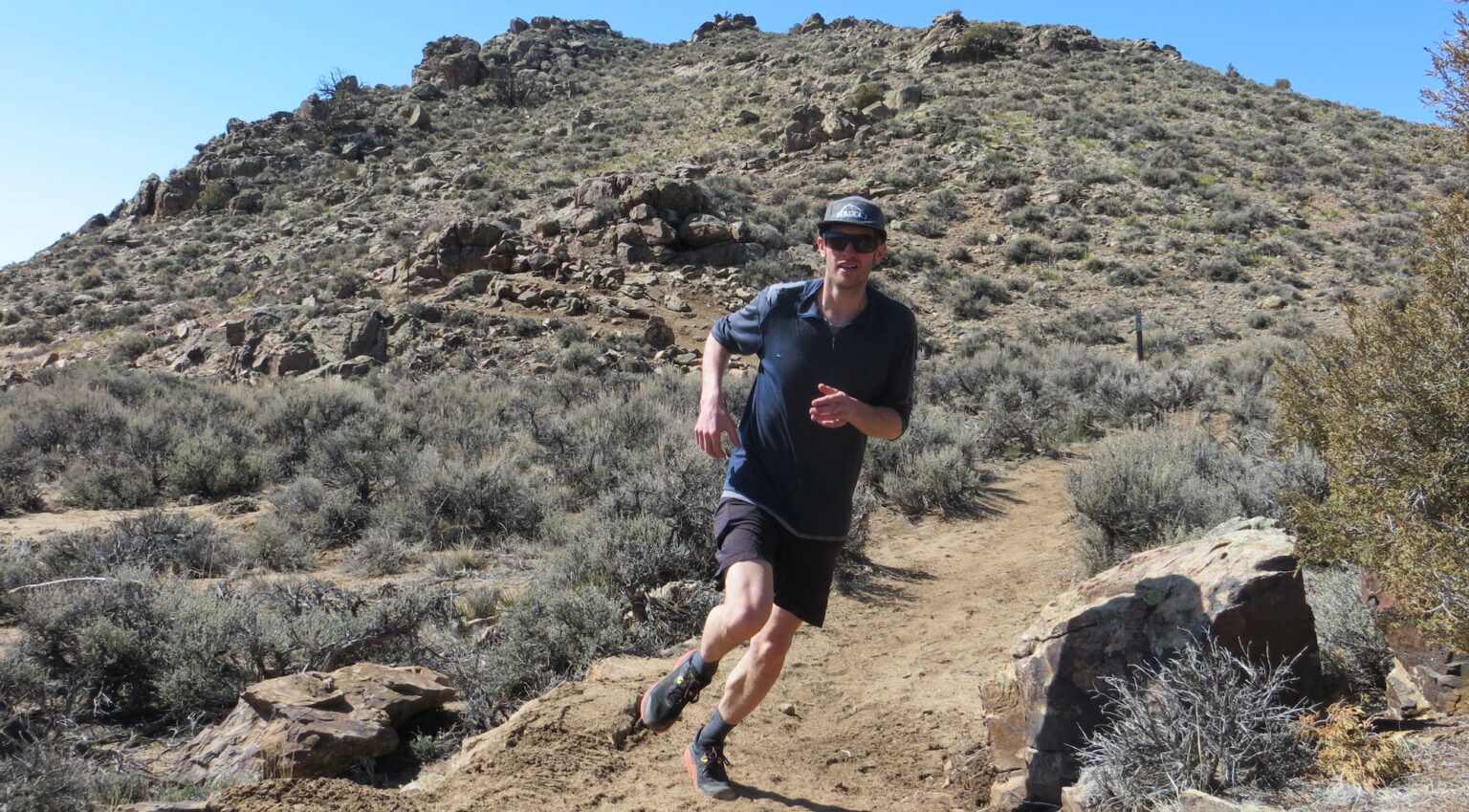

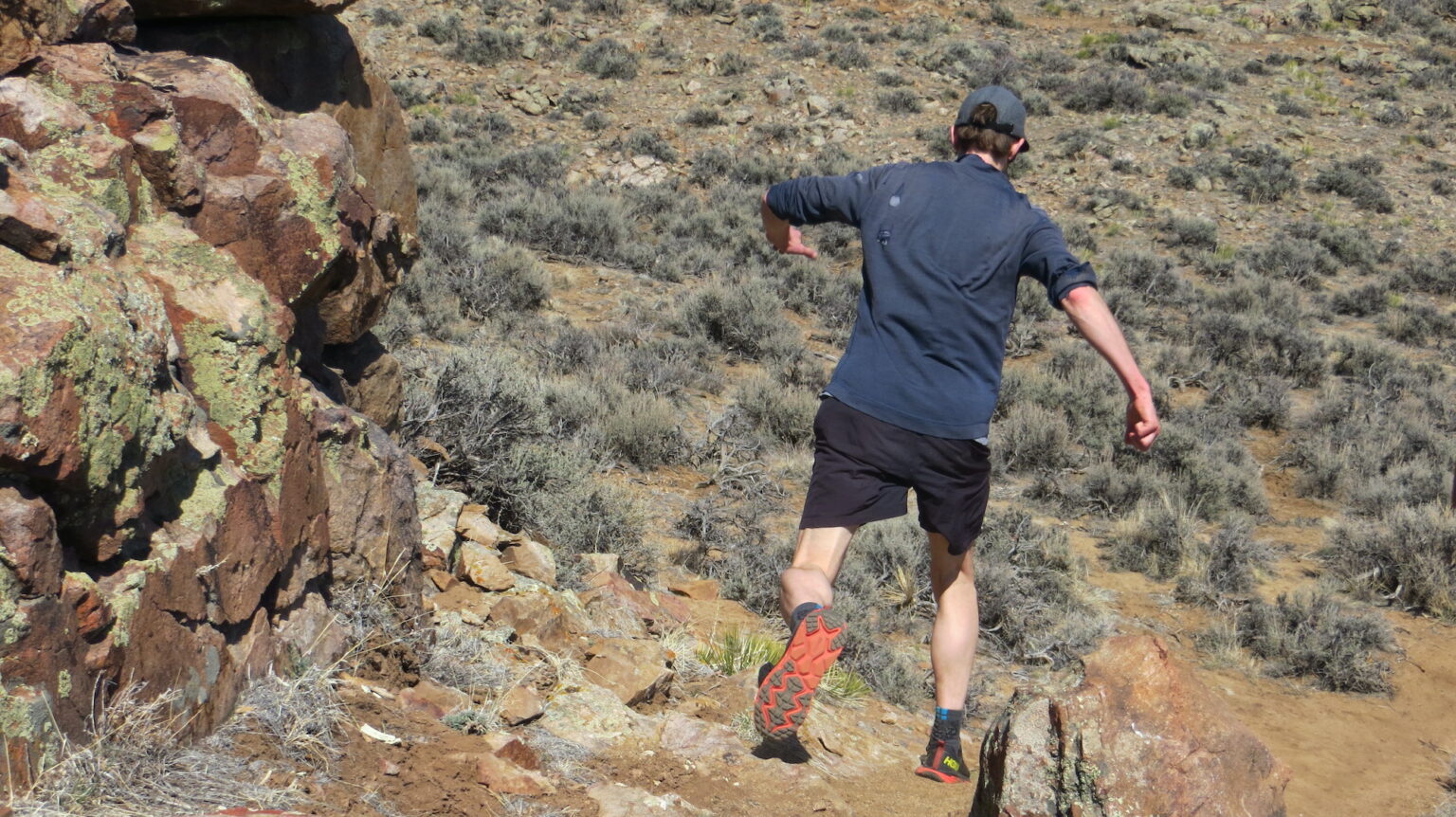

how would you compare the atr6 width to atr5?
For someone who wears the arahi regularly with low arches/flat feet but who does lots of all terrain moving not just running, would this be good?
Are these shoes good enough for half marathon and/or full marathon in winter /spring in Polish weather?